Sali Municipality Offering Generous Incentives for Demographic Revival
January the 30th, 2023 - The Sali Municipality on Dugi otok has decided to pour very generous sums of cash into trying to ensure a demographic revival for the area, with each family who has a child being granted an enviable amount of cash from the local authorities.
As Poslovni Dnevnik writes, a positive example of proper care for families and tackling the ongoing demographic crisis can be found in the Sali Municipality on Dugi otok, which holds the record in Croatia for the benefits it provides for each newborn child. Each family that has a child receives a massive 60,000 kuna - almost eight thousand euros in the new currency, in six equal annual installments.
Negative demographic growth is a problem for most of Croatia, and it especially affects the islands. Dugi otok has a little more than 1,500 inhabitants, of which about 650 live in the Sali Municipality. The fee paid out by the powers that be for each newborn child was introduced back in 2017, and now amounts to slightly less than 8 thousand euros, according to a report from HRT.
The time spent by the youngest little islanders in the new kindergarten in Sali is also co-financed by the municipality, and money is also allocated for Christmas gifts and school workbooks. In short, allocations for children make up a large part of the local budget, which means a lot to their parents.
''Children get a better treatment, they can get access to better services, better food for babies, better strollers can be bought. It's a big deal because everything is more expensive on the islands, so that money means a lot and goes a long way,'' said Sebastijan Raljevic, the father of a one-year-old girl in Sali.
Another fact that is often forgotten is precisely what Sebastijan mentioned - that everything is more expensive for islanders, from basic food and hygiene items to fuel and building materials. In addition, everything that is taken for granted in the city, such as arranging extracurricular activities for the kids, becomes a real undertaking. However, there are quite a few children in the Sali Municipality, and their numbers are steadily on the up.
''When we look purely statistically, since 2017, more than ten children have been born in the Sali Municipality every year. If we look at the number of students attending the local primary school, in the eight classes there are, only three classes have ten or more children. I think the greatest importance of this support is to make life easier for both children and their parents and for them to stay at home here on the island, which is the goal of this measure, said Zoran Morovic, the mayor of the Sali Municipality.
As such, parents of two or more children receive already very large amounts from the local authorities, with the help of which they can start a business, or equip and modernise an existing one, which will make life on the island easier for adults and ensure a carefree childhood for the youngest residents.
For more, make sure to check out our news section.
Sali on Dugi Otok Once Led in Infections, Now it Leads in Vaccination Rate
November the 7th, 2021 - Sali is a beautiful place on a famously stunning island, Dugi otok. It once led in terms of coronavirus infections, which isn't exactly the best statistic, but now things have been turned on their heads and Sali is leading in terms of the vaccination rate.
As Morski writes, according to recent data published by the Croatian Institute of Public Health, one municipality in Zadar County is the absolute record holder in terms of the vaccination of its residents. In Sali on Dugi otok, a municipality with an official census of 1,900 people, 64.3 percent of them have already received both doses of the coronavirus vaccine.
At the beginning of the pandemic, it didn't look like that, quite the opposite in fact. After several group celebrations and one birthday, the infection rate escalated, and the number of those infected in Sali rose to as many as 39 in one single day. Every other house in Sali had its residents put into self-isolation back in those days, writes local portal Zadarski.hr.
In addition, they also had a priest, Tomislav Vlahovic, who preached from the altar that ''coronavirus doesn't exist and that true believers cannot be infected'', which is absolutely mind-boggling to say the least. He refused to listen to the instructions of the Archbishop and to implement the measures of the Civil Protection Directorate, and he encouraged others to follow his path. Some people unfortunately even listened to him. That's why just one year ago, the church choir became the second major focus in this small town.
''Coronavirus really went hard here in Sali, people saw first hand how dangerous and contagious it is. Then, when that first wave subsided, the tourist season came from which most of the islanders live, so then they started to act very responsibly. We were among the first to have a testing point on the island. Of the 500 tourists tested before leaving, none were positive. As for the islanders, ten days ago we had five to six cases a day, now that number is between two and three positive people. So, despite all these black statistics, the number of infected people in Sali is declining,'' said the mayor of Sali, Zoran Morovic, who personally, together with the local island Civil Protection Directorate and medical staff, got involved in the vaccination campaign.
An uncomfortable situation unfortunately unfolded when it seemed that the clinic in Zman could have been left without a doctor as the virus ran wild. Sali asked for help from the Institute of Public Health, which sent its team down and out into the field with the head of the epidemiological service, Dr. Alan Medic.
''They've been here six or seven times for the people on the island, especially at the time of the pandemic, and the availability of vaccines was crucial. We were all committed to their arrivals: we kept people informed, prepared lists so that by the time the team came to the island everything would be ready for vaccination to be carried out. I even transported the medical team in my car a couple of times from place to place, to make everything go smoothly. I have to tell you, it was with joy because the medical teams were great, everything was done really flawlessly. Whoever wanted to get vaccinated got vaccinated. And we all wanted to! It’s important to say that there weren’t any more severe cases among the younger people except for one guy who ended up needing oxygen. He wasn't vaccinated. But, he managed to pull himself out of it, it ended well,'' said Morovic for Zadarski.hr.
Bibinje is the worst...
Overall, the share of vaccinated people in Zadar County in any part of it is not lower than twenty percent. Vaccination of less than thirty percent has been recorded in Bibinje (with only 20.76 percent), followed by Obrovac, Stankovci, Policnik, Galovac, Sveti Filip i Jakov, Pakostane, Skabrnja, Sukosan and Polaca. Zadar is brighter orange on that map with 35.42 percent of the local population vaccinated.
For all you need to know about coronavirus specific to Croatia, make sure to bookmark our dedicated section and select your preferred language if it isn't English.
Sali on Dugi Otok Flips Epidemiological Situation from Terrible to Excellent
August the 14th, 2021 - Sali on beautiful Dugi otok has managed to create a dramatic turnaround in terms of their local epidemiological situation. The novel coronavirus just about made it inside every single house in Sali, but that dire situation has now been well and truly flipped on its head.
As Poslovni Dnevnik writes, on two occasions over recent months, the town of Sali on Dugi otok has been an example of a situation in which the spread of the coronavirus infection has spiraled out of control. However, according to the latest data published by the Croatian Institute for Public Health, Sali is now at the very top in terms of vaccination, ending the virus' free reign.
Sali's current vaccination rate stands at 64.1 percent, and this is the official figure that has kept all eyes on Sali, a favorite destination for both Croatian and foreign sailors. Jacopo confirmed to HRT that he feels very safe in Sali, and Frederica confirmed that they were also vaccinated against the novel coronavirus. Knowing that they're in a country where a large number of people are vaccinated is very important to them, he added.
The tourist season for this location is a record in all respects, and the good epidemiological situation gives room for hope that it will last. Maja Kraljev from Sali works abroad and she is very pleased with the latest data - it is important to her that she can come to visit her parents there in peace.
Andjelko Raljevic Ciko, one of the more famous Sali residents, had no doubt in his mind whatsoever about whether or not he should get vaccinated. He suffers from chronic bronchitis and was first vaccinated on the recommendation of a doctor. He will do it a third time if he needs to, he says. There is almost no house in Sali where they didn't have coronavirus patients, which pushed most people to get vaccinated as soon as it became possible.
''It was rough and the virus hit us hard here. Fear crept in among the people. And we have to live, we have to work and protect our community. Both the elderly population and the children,'' said Marijana Orlic, a nurse.
The response of Sali's locals was also influenced by the availability of vaccines, thanks to the mobile team of the Zadar Institute of Public Health. This is a great message to send out about this beautiful little place and is by far the best invitation for visitors to come and spend time on Dugi otok.
For all you need to know about coronavirus specific to Croatia, make sure to bookmark our dedicated COVID-19 section and select your preferred language.
Plastic-Free Croatia: Croatian Cities and Islands Moving to Reduce Plastic Waste
February 7, 2021 - Dubrovnik, Trogir, Stari Grad on Hvar, and Sali on Dugi Otok will be the first in Croatia to reduce plastic waste and use alternative solutions by participating in projects implemented by the Split Association "Sunce" for Nature, Environment, and Sustainable Development, setting the pace for a plastic-free Croatia.
Glas Istre reports that "Plastic Smart Cities Croatia" and "For Plastic Free Croatian Islands" aim to reduce plastic waste and use alternative solutions. They analyze the use of disposable plastics and waste plastic management in the local communities involved, develop and implement a "Plastic-Free Plan" with a participatory approach and workshops, as well as organize "plastic-free" public events, i.e., events and public forums aimed at raising awareness in the local population about the consequences of plastic pollution.
One of the important activities is implementing a national campaign to raise awareness of the impact of plastic pollution on the marine environment and available sustainable solutions in the island communities on Hvar and Dugi Otok. The Split Association for Nature, Environment and Sustainable Development "Sunce"is currently working on organizing workshops for networking partners and environmental organizations engaged in this topic.
It is in this project that the pioneer association "Sunce" began implementing the projects "Plastic Smart Cities Croatia" and "For Plastic Free Croatian Islands" to reduce the plastic footprint in various segments of social life in local communities by reducing the use of disposable plastic and encouraging the use of alternative solutions for plastic waste. One of their project goals is to raise the awareness of citizens and the public about plastic waste.
After the completion of the project, a final conference will be held aimed at disseminating the project results and encouraging the further reduction of plastic waste for representatives of local island authorities, national and international NGOs, local government units, representatives of the Croatian Chamber of Commerce, tourism, relevant ministries, and other stakeholders, with the message "Reduce the use of disposable plastics and look for more sustainable solutions!", which the Sunce Split Association has been advocating for many years.
They remind that a new Law on Waste should be adopted in Croatia this year, which, among other things, contains some provisions of the EU Directive on reducing the impact of certain plastic products on the environment. At the end of last year, independently and in cooperation with other environmental protection associations in Croatia, they sent their comments on the Waste Act's draft proposal.
They add that the European organization "Seas at Risk," which brings together several associations dealing with protecting the marine environment, assessed last summer that the EU directive is an ambitious plan to dispose of ten non-reusable plastic items, and which can most often be found on beaches across Europe, but that its implementation into national legislation in most European countries has been halted.
The COVID-19 crisis has led to a dramatic increase in the use and the rejection of disposable plastic objects in nature.
"The Mediterranean Sea is one of the world's most polluted seas, and half of this enormous amount of waste comes from the mainland. With 400 kilotons of waste generated annually, Croatia ranks third in the region. Hence, it is imperative to take urgent measures and raise awareness to numerous visitors about the need for urgent action, i.e., reducing disposable plastic use.
Namely, tourism has been identified as one of the key actors, so part of the awareness campaign within the "Plastic Smart Cities" project is aimed at foreign and domestic tourists, the Sunce Split Association points out.
The EU directive on plastic waste was adopted in 2019 after a trialogue, i.e., negotiations between the European Parliament, the Commission, and the EU Council. This year, all EU countries must finally implement it. The Law on Waste in Croatia should be adopted by July 3 at the latest. Croatia should also throw out disposable plastic products, namely plastic q-tips, cutlery, plates, straws, drink sticks, and balloon holders.
After adopting the directive in the European Parliament, the then Croatian MEP Davor Škrlec from the Green Group said that the directive should be used to encourage change for us as a society to produce less garbage and become sustainable.
"If we do not change our attitude towards production, consumption, and waste, the human species will become consumable like a disposable coffee cup. This directive will help us abandon disposable plastics on the road to less consumption, better designed reusable products, more innovation, and a cleaner environment," Škrlec said then.
The directive also includes provisions for the disposal of cigarette butts, which are a significant polluter, the objectives of collecting beverage bottles, and the requirement to redesign beverage stoppers to connect them to bottles. The directive also includes national targets for reducing the consumption of plastic cups and food containers, and ultimately a total ban on oxo-degradable plastics often referred to as biodegradable but in reality fragmented into microplastics.
Disposable plastic products and fishing gear together account for 70 percent of Europe's marine litter, so it is expected that Europe's seas will be significantly cleaner by implementing the directive.
According to the Commission, the directive will bring many benefits for the environment and the economy. Environmental damage would be avoided, costing €22 billion by 2030, and saving consumers up to €6.5 billion, with an adjustment cost estimated at €3.2 billion for manufacturers.
At the end of last year, the Commission adopted new rules on the import and ban on exports of plastic waste to third countries that do not have the capacity to manage it in a sustainable way, which is one of the main points of the European Green Plan and EU Circular Action Plan.
To read more about lifestyle in Croatia, follow TCN's dedicated page.
New Breakwater and Waterfront On the Cards for Sali, Zadar County
As Morski writes on the 29th of May, 2019, the construction of a coastal belt and the new breakwater is a new project of the Zadar County Port Administration in the ports of the Zadar region's islands which are now waiting for the necessary construction permits, as well as to be registered as candidates for funding from the Croatian Ministry of Maritime Affairs, Transport and Infrastructure within the scope of the "Competitiveness and Cohesion 2014-2020" program.
The above project is worth a massive thirty million kuna, with the investor, the Zadar County Port Authority, accounting for 75 percent of the investment within this program. Currently, the largest port facility operation in Zadar County, the construction of a ferry port in Tkon on the island of Pašman, is funded mostly by money from the aforementioned fund, Zadarski.hr writes.
With this investment, the northern shore of the harbour or the bay in Sali will be extended and properly arranged in the length of an additional 150 metres, while the new breakwater which is also set to be constructed in Sali will be 114.5 metres in length.
The new pier will fully protect the Sali's harbour, and thus far more securely, from potentially damaging and strong southeastern winds, and the new shoreline and breakwater will provide new berths for the transit needs of Sali's local harbour within a concession held by the Sali-based communal company "Mulić".
Davor Škibola, the director of ŽLU Zadar, said that all preparations for the realisation of this project could be completed by the end of this year, and that things could be wrapped up at the time, or at the latest at the beginning of next year, when the construction of a new part of Sali's riva (waterfront) and the breakwater would finally begin.
Make sure to follow our dedicated lifestyle page for much more.
World's Biggest Welcome in Croatia: Day 30 - Sali to Kurba Vela (Foot, Kayak)
April 23, 2019 - Putting Croatian adventure tourism on the map, with the biggest welcome in the world. Day 30 of this incredible 2011 adrenaline trip covering 2,500 km along the Croatian coast.
The World's Biggest Welcome, an ambitious adventure tourism project in 2011 in Croatia enters Day 30 of this 2019 appreciation of one of the finest tourism promotion projects ever in Croatia.
The plan? To showcase the diversity and fabulous offer of adventure tourism in Croatia by following a GPS route the length of the Croatian coast in the shape of the word 'Welcome' - thereby creating the biggest welcome in the world from a hospitable tourism country.
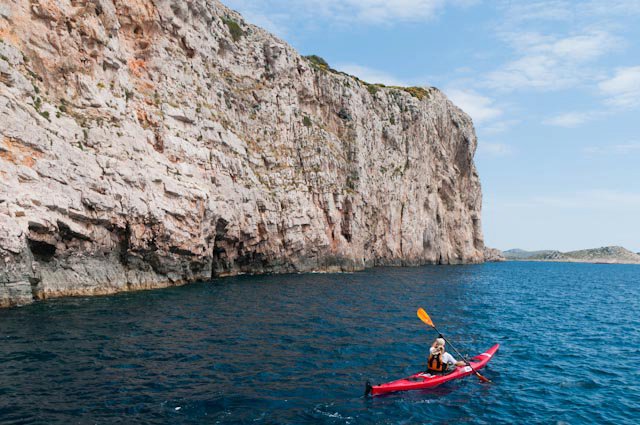
Day 30 moved from Sali to Kurba Vela on foot and kayak.
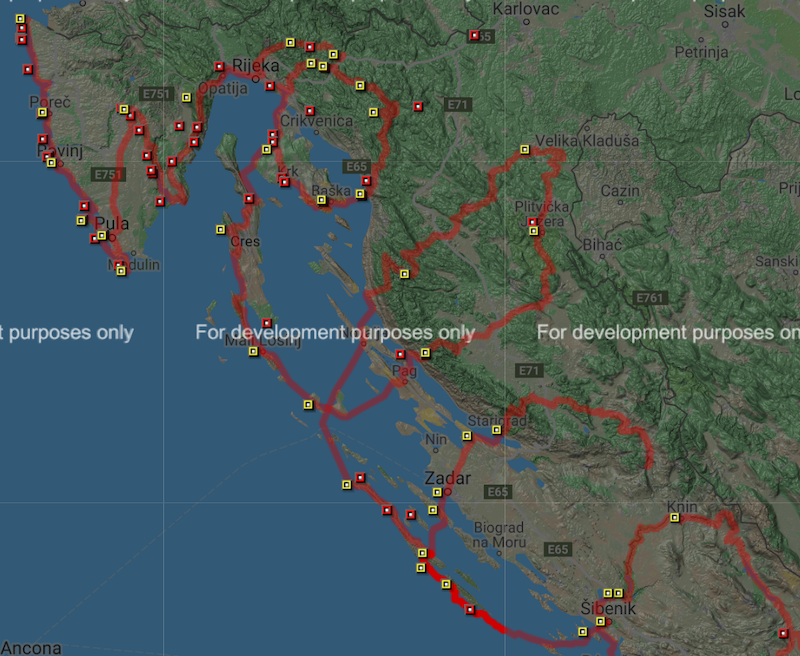
52 kilometres for the day: 10 km on foot from Sali to Telaščica, followed by a 42 km kayak ride from Telaščica to Kurba Vela to continue forming the ‘C’ in ‘Welcome’.
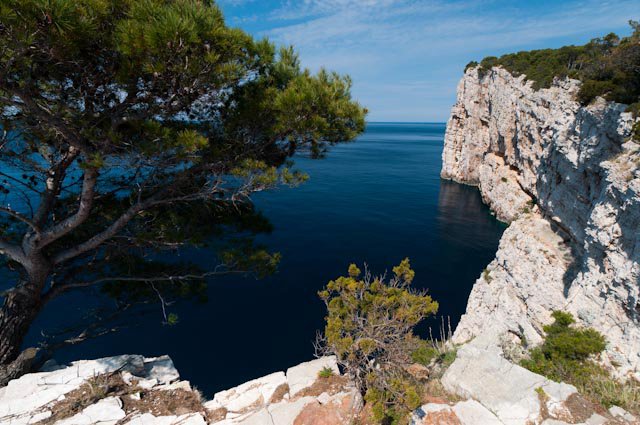
Day 30 set off from Sali to Telascica Nature Park.

Lacko setting off towards Kornati.
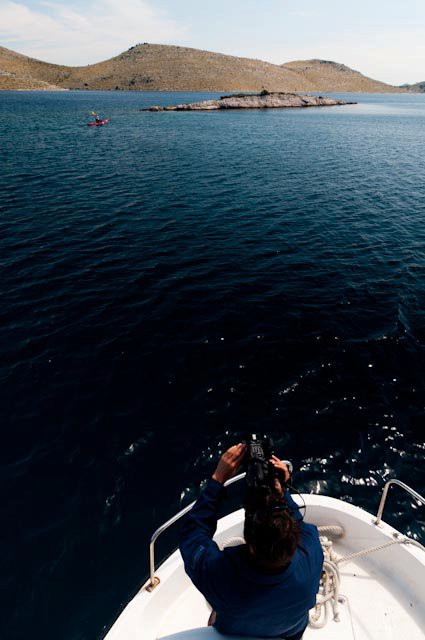
The cameraman filming the adventurer - Lacko.
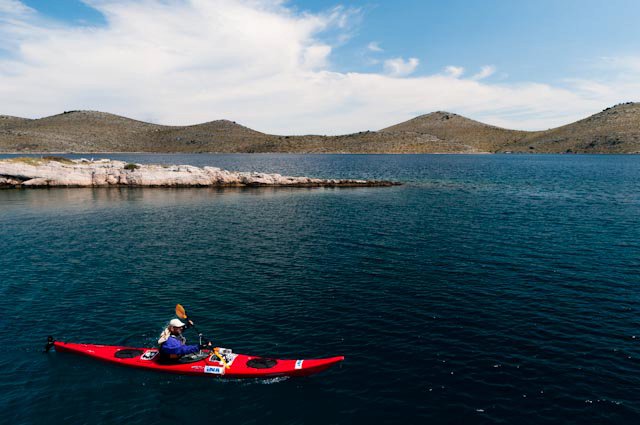
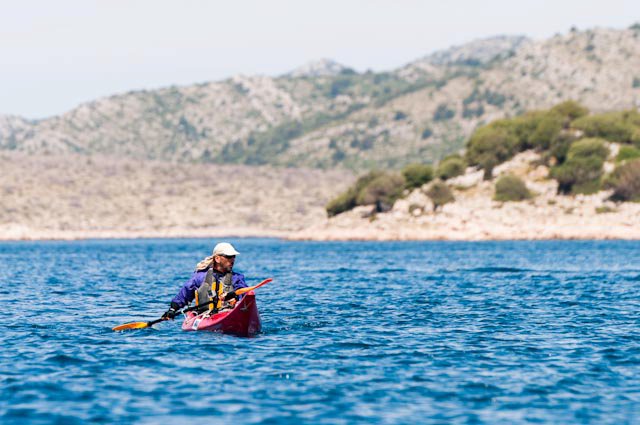
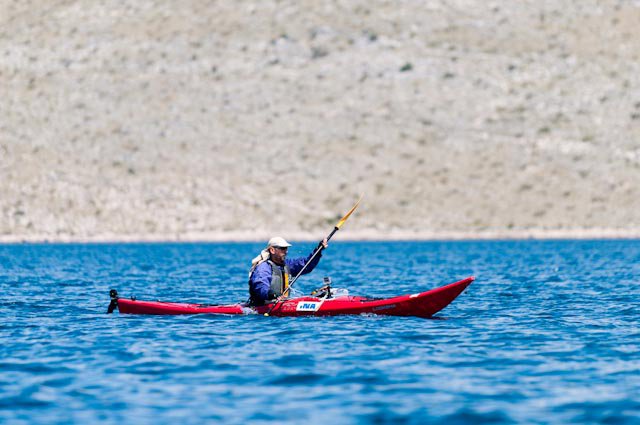
Lacko on his way to Kornati.
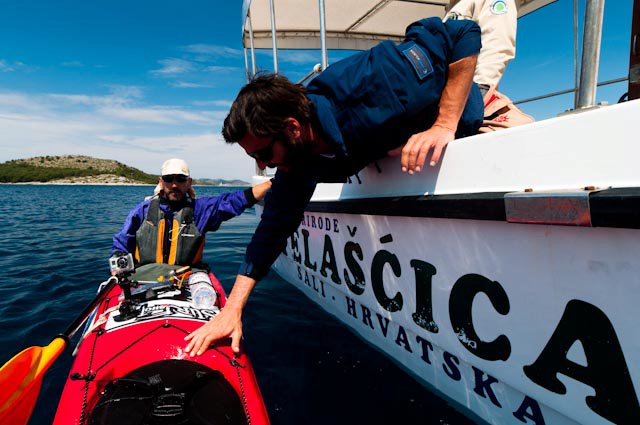
Marko fixing the GoPro on Lacko's kayak.
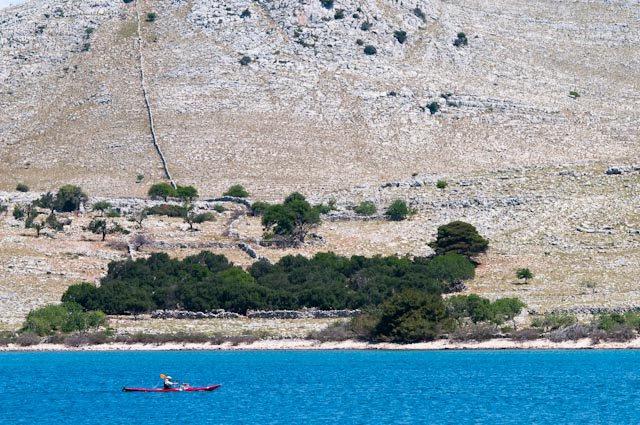
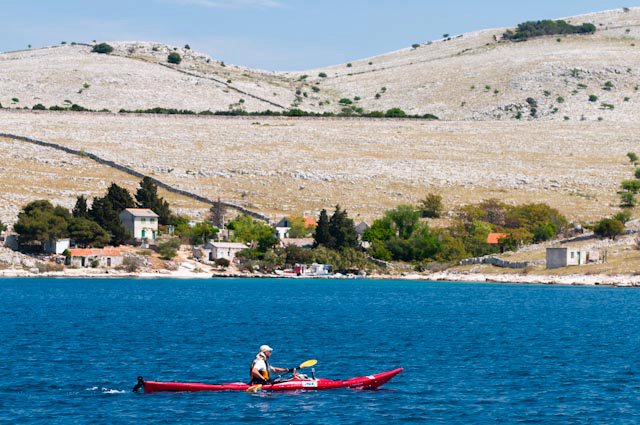
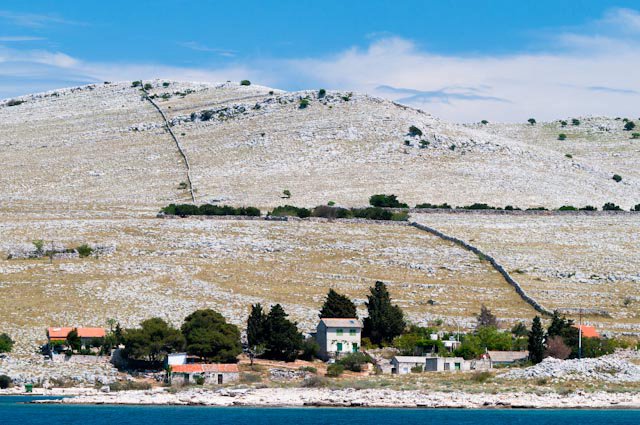
Kornati in all of its glory.
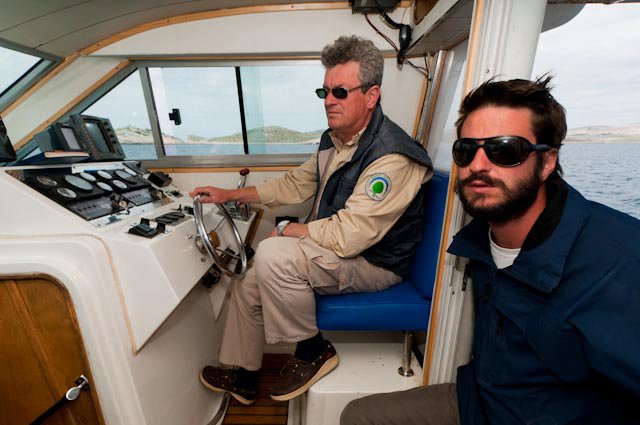
The team at Kornati.
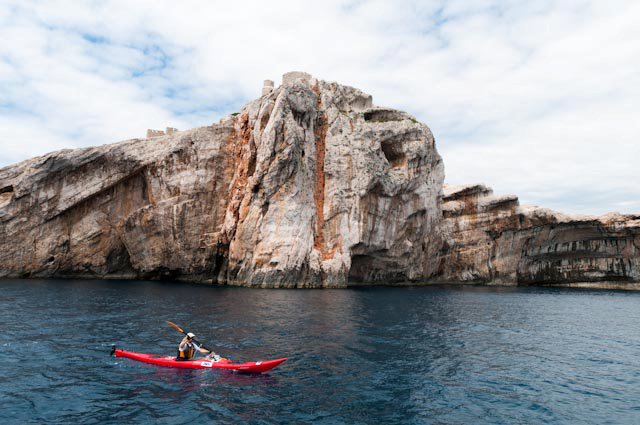
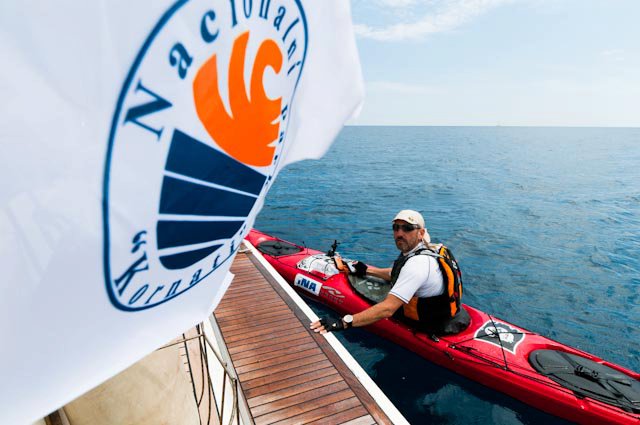
Lacko making his way to the Kornati National Park.
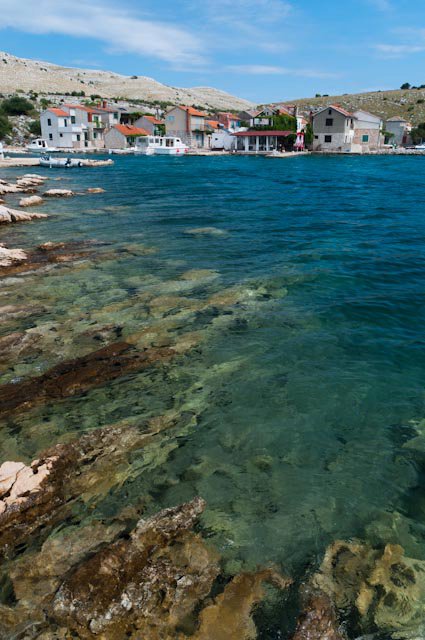
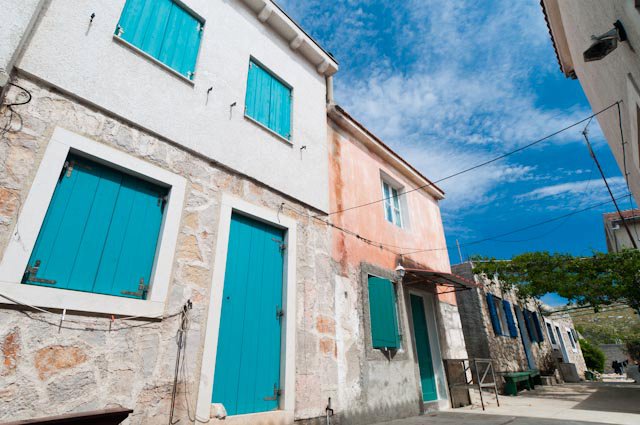
Arriving in town.
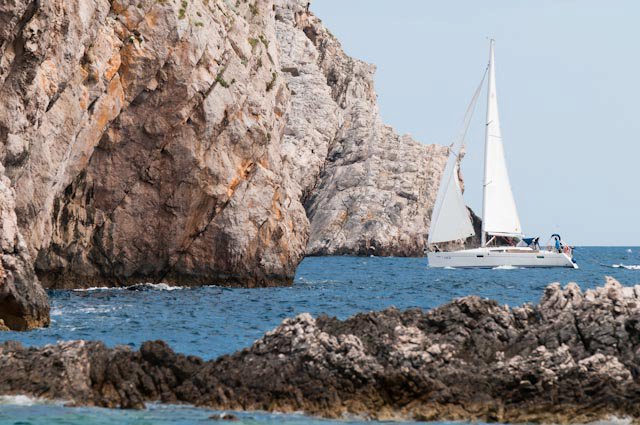
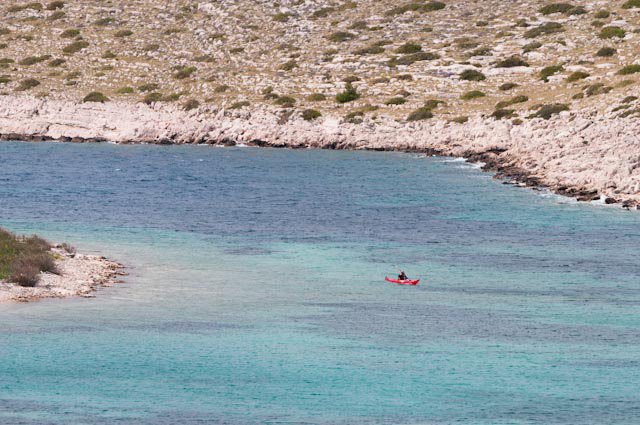
Boats in the archipelago.
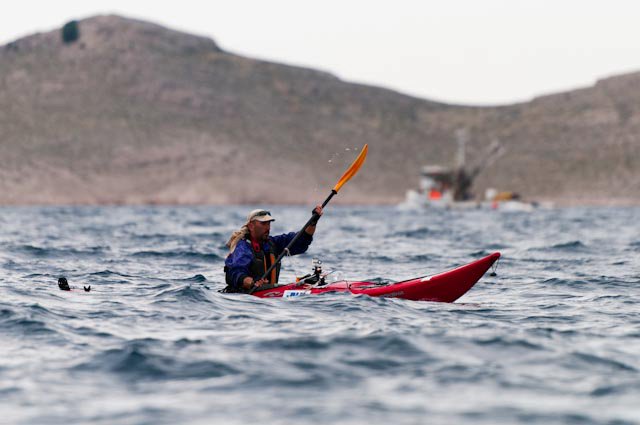
And Lacko.
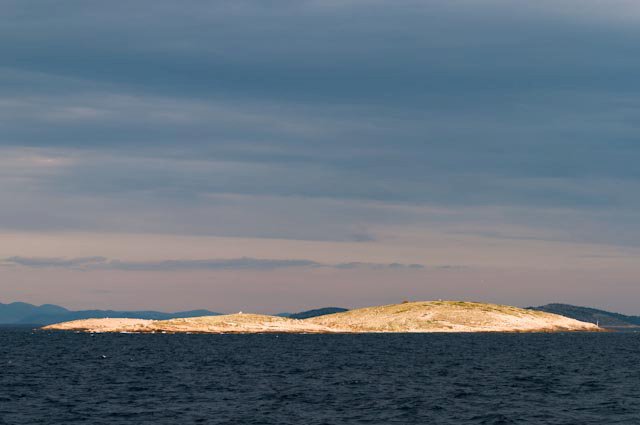
The small island that hosted the crew for a night.
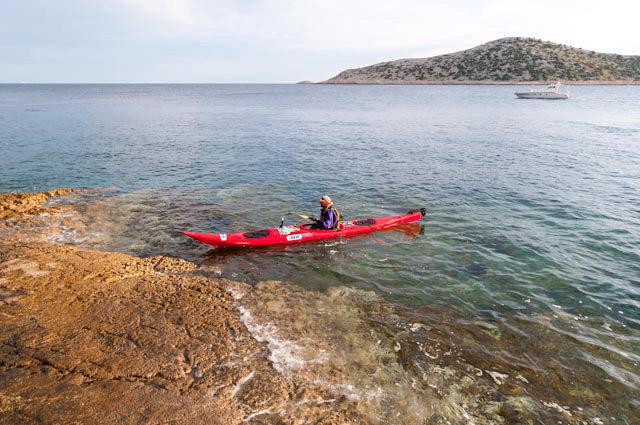
Lacko arriving at the island.
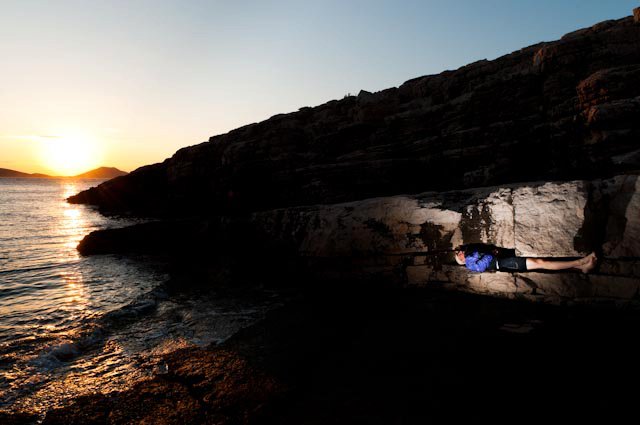
Lacko's room.
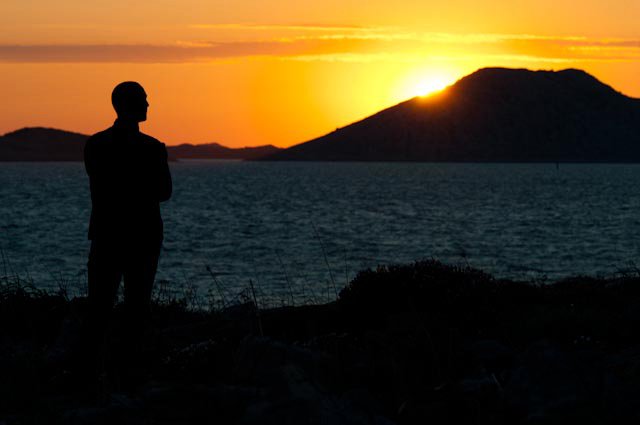
The sunset from the island.
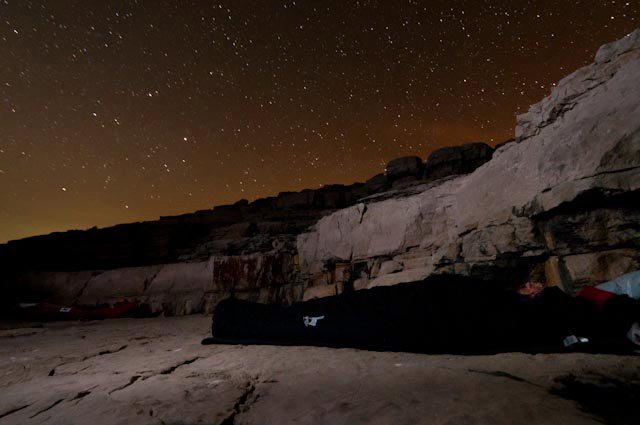
And sleeping under the starry night sky.
A key part of the project was promoting tourism, and the official website has details of the key places visited during the day.
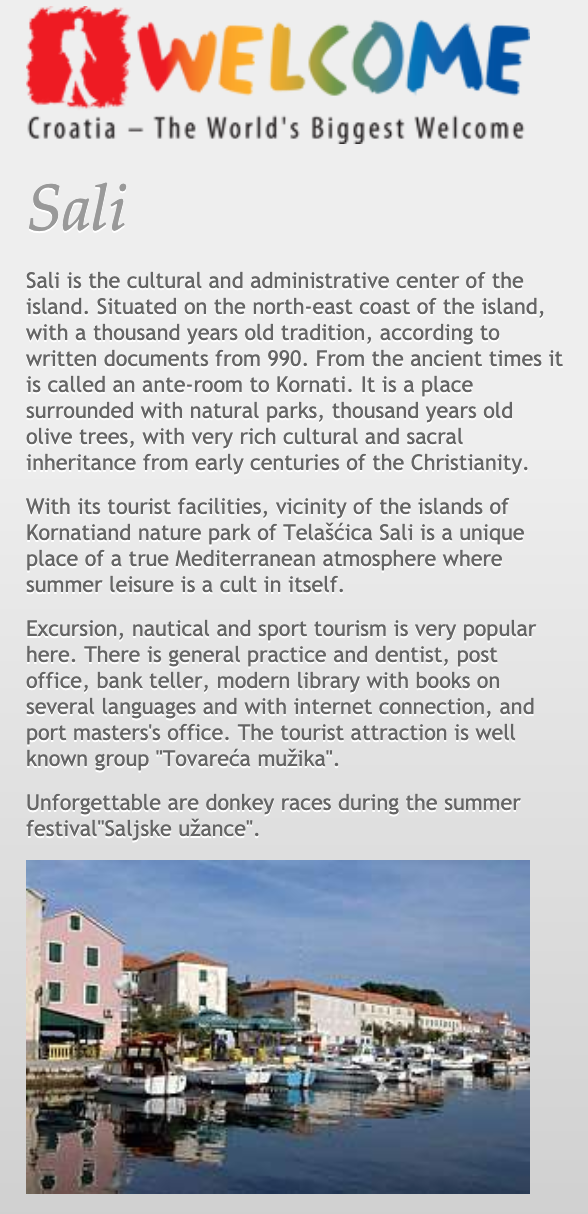
Sali.
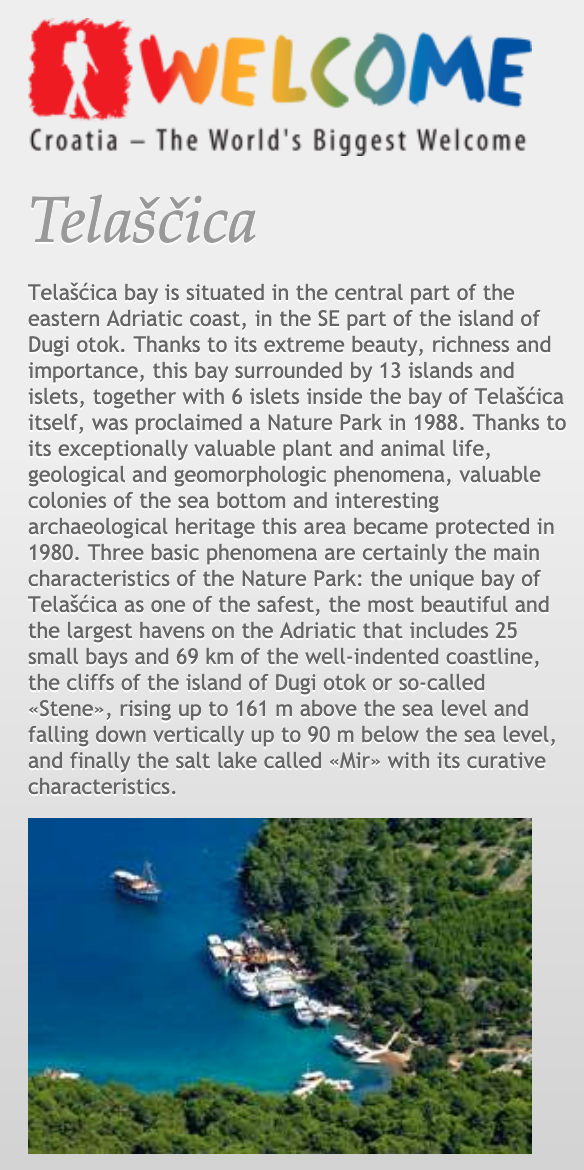
Telaščica.
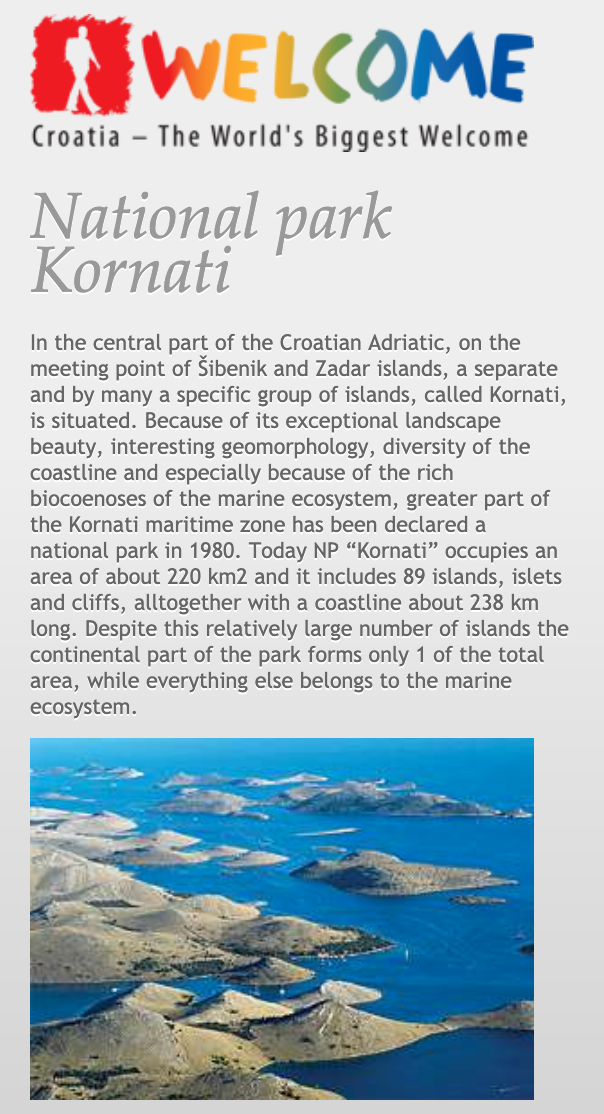
Kornati National Park.
You can see the entire project on the Welcome website, as well as much more of Luka Tambaca's stunning photography on the Welcome Facebook page.
Tune in tomorrow for Day 31, as Lacko moves from Kurba Vela to Šibenik by kayak.
To follow the whole project from the start, follow the dedicated TCN page.
World's Biggest Welcome in Croatia: Day 29 - Zadar to Sali (Kayak, Foot)
April 22, 2019 - Putting Croatian adventure tourism on the map, with the biggest welcome in the world. Day 29 of this incredible 2011 adrenaline trip covering 2,500 km along the Croatian coast.
The World's Biggest Welcome, an ambitious adventure tourism project in 2011 in Croatia enters Day 29 of this 2019 appreciation of one of the finest tourism promotion projects ever in Croatia.
The plan? To showcase the diversity and fabulous offer of adventure tourism in Croatia by following a GPS route the length of the Croatian coast in the shape of the word 'Welcome' - thereby creating the biggest welcome in the world from a hospitable tourism country.

Day 29 moved from Zadar to Sali by kayak and on foot.
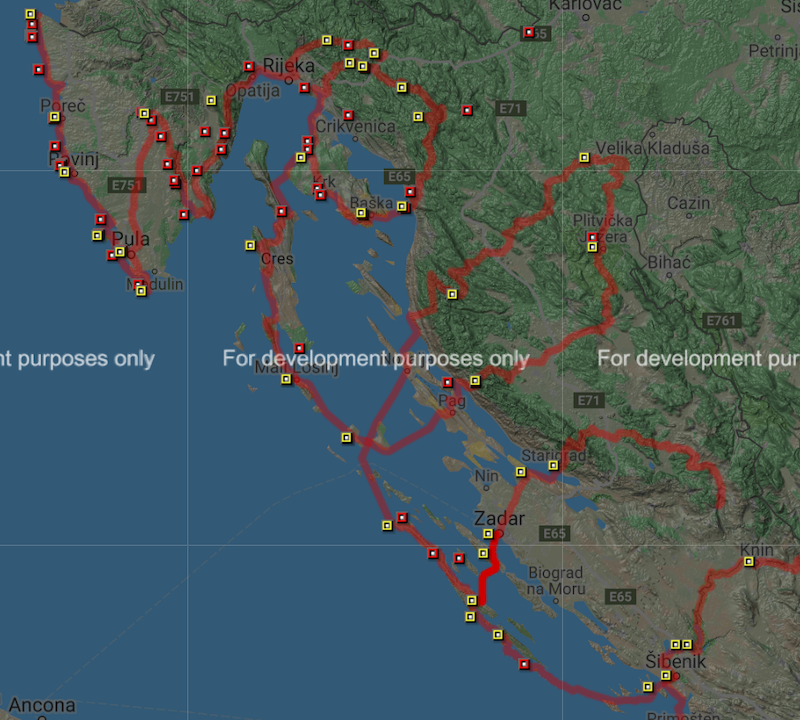
27 kilometres for the day: 6 km from Zadar to Kali by kayak, followed by 3 km on foot from Kali to Ugljan Plaža, before another 18 km kayak ride from Ugljan Plaža to Sali to continue forming the ‘C’ in ‘Welcome’.
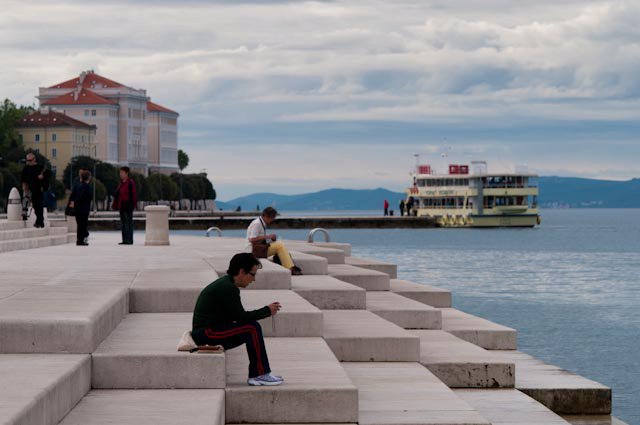
Day 29 started on the Zadar Riva.
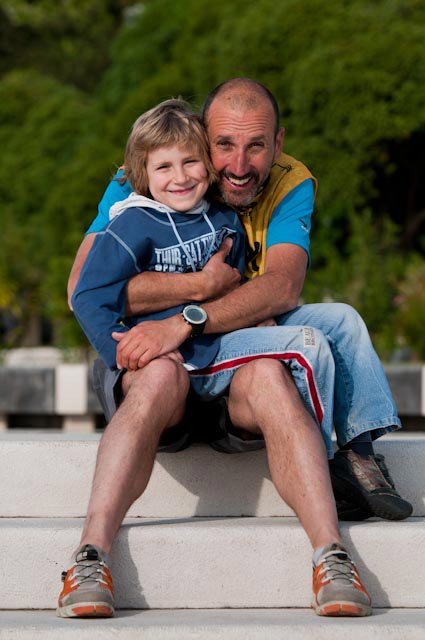
Where Lacko also got to spend time with his nephew, Petar.
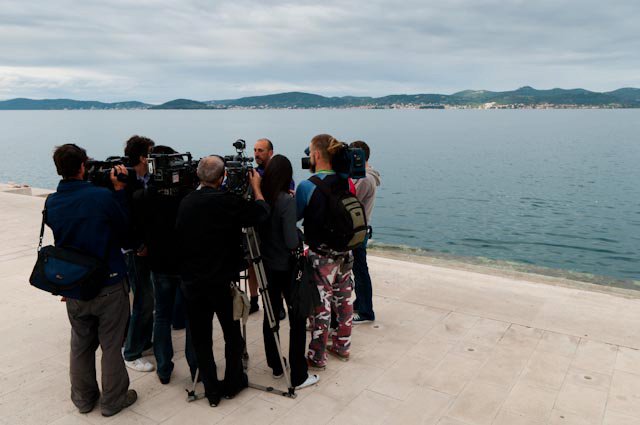
The media even came out to see Lacko off to his next destination.
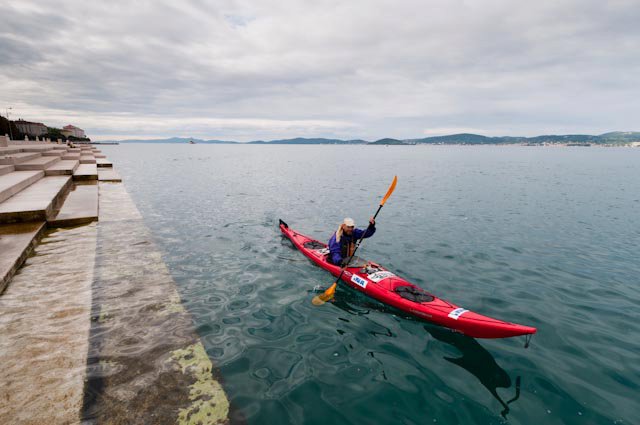
Lacko making his way to Preko.
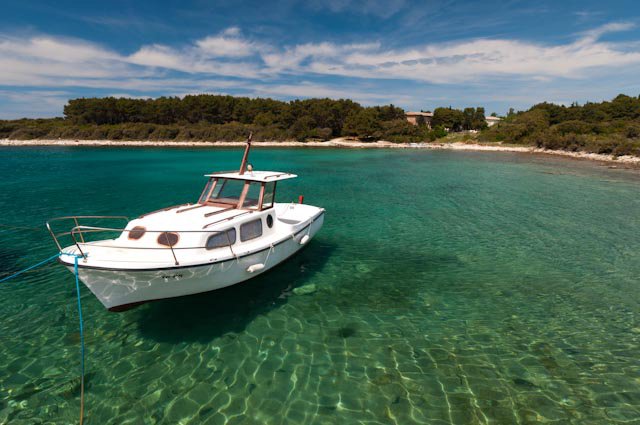
And then towards the island of Veli Iz from a bay next to a hospital on the island of Ugljan.

At Ugljan before departure towards Veli Iz.
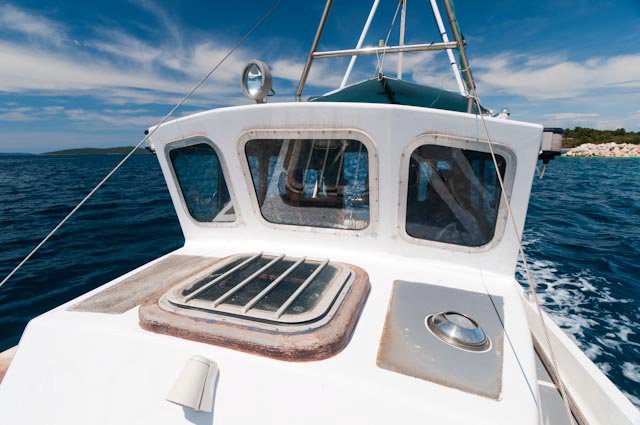
Aldo from Veli Iz picked up the crew on his fishing boat.
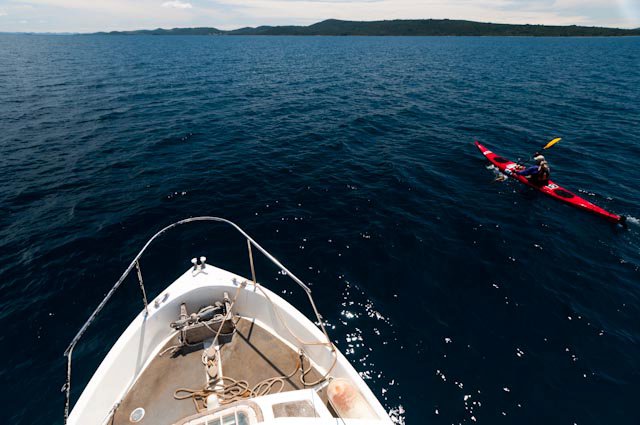
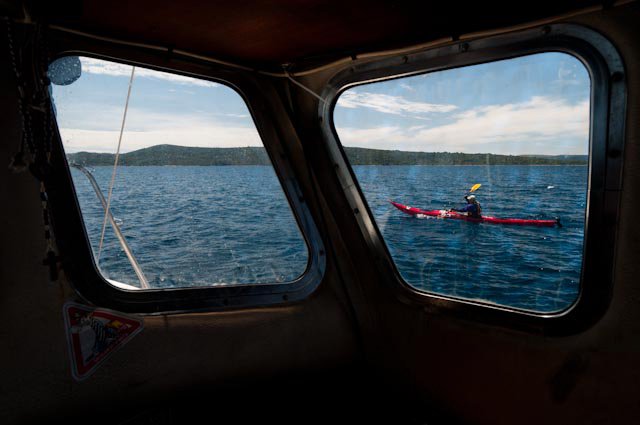
Lacko speeding away.
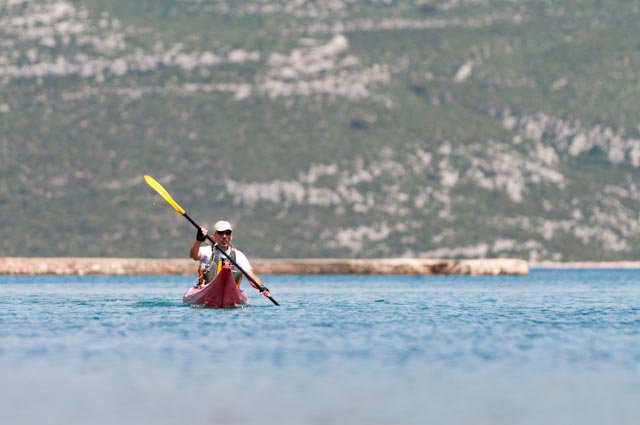
Lacko arriving at Veli Iz.
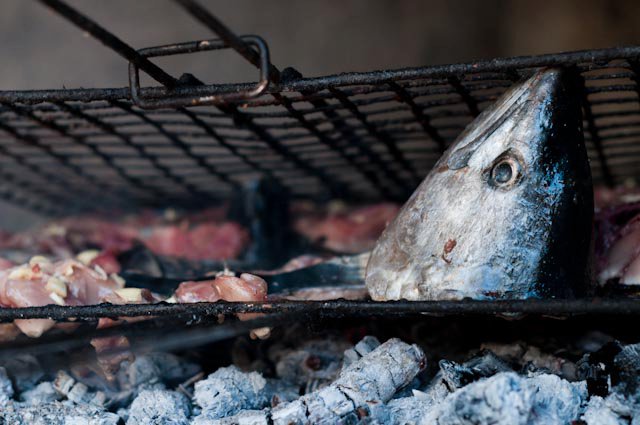
Where they were greeted with palamida fish on the grill.
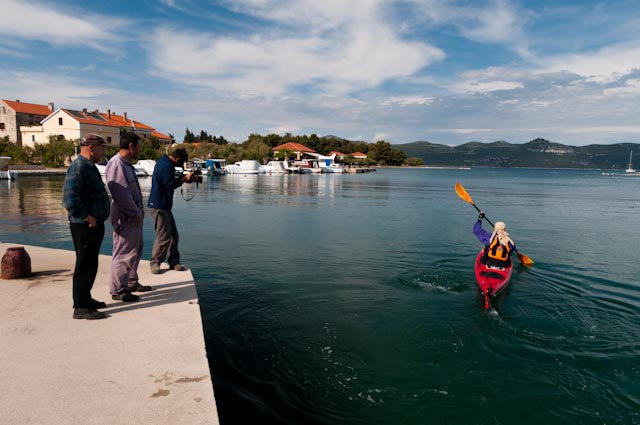
With full bellies, they set off towards Sali.
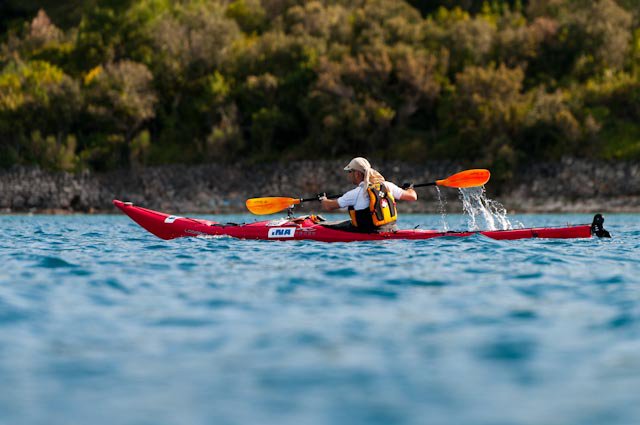

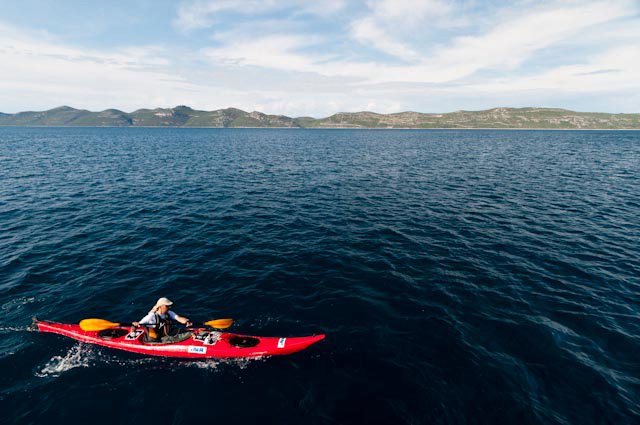
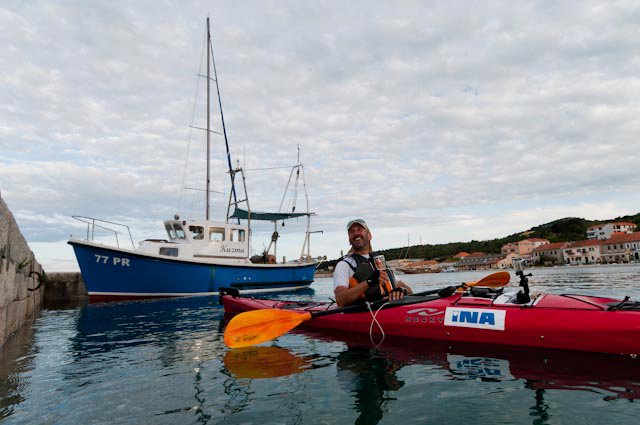
Lacko was greeted in Sali with a beer.
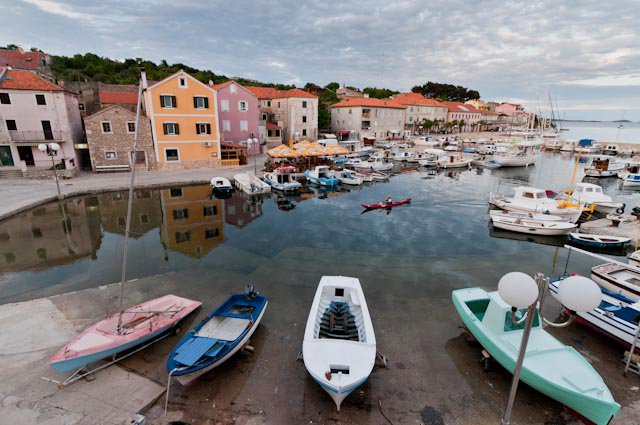
A colorful town.
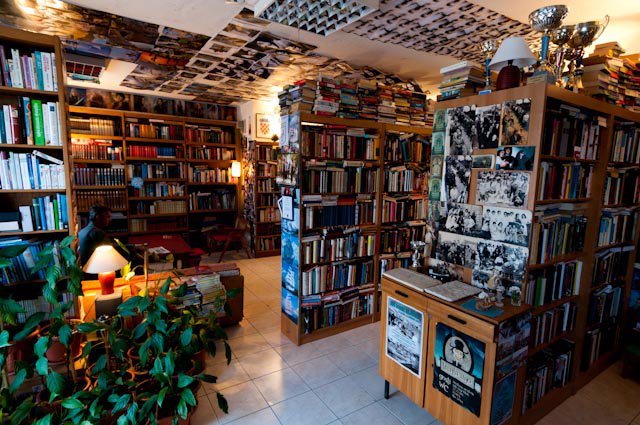
With a famous library.
A key part of the project was promoting tourism, and the official website has details of the key places visited during the day. 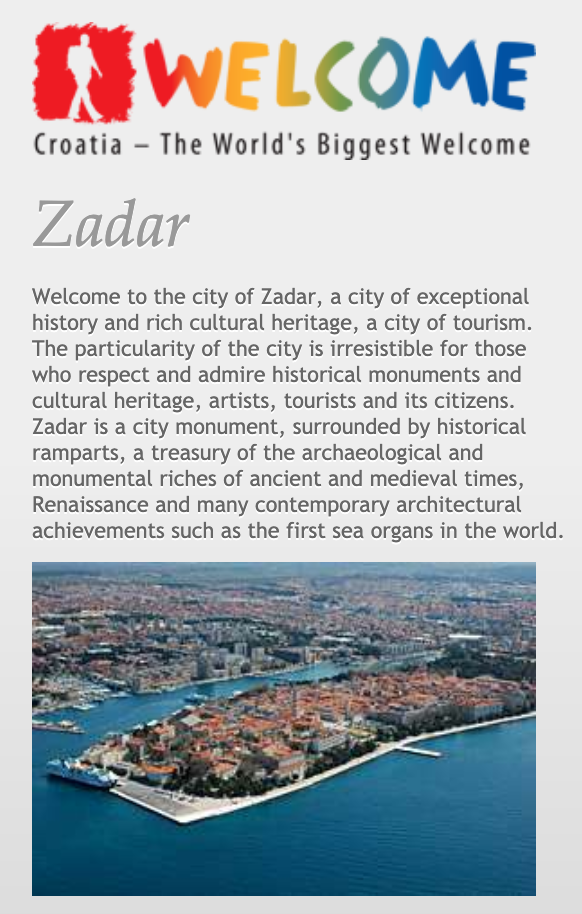
Zadar.
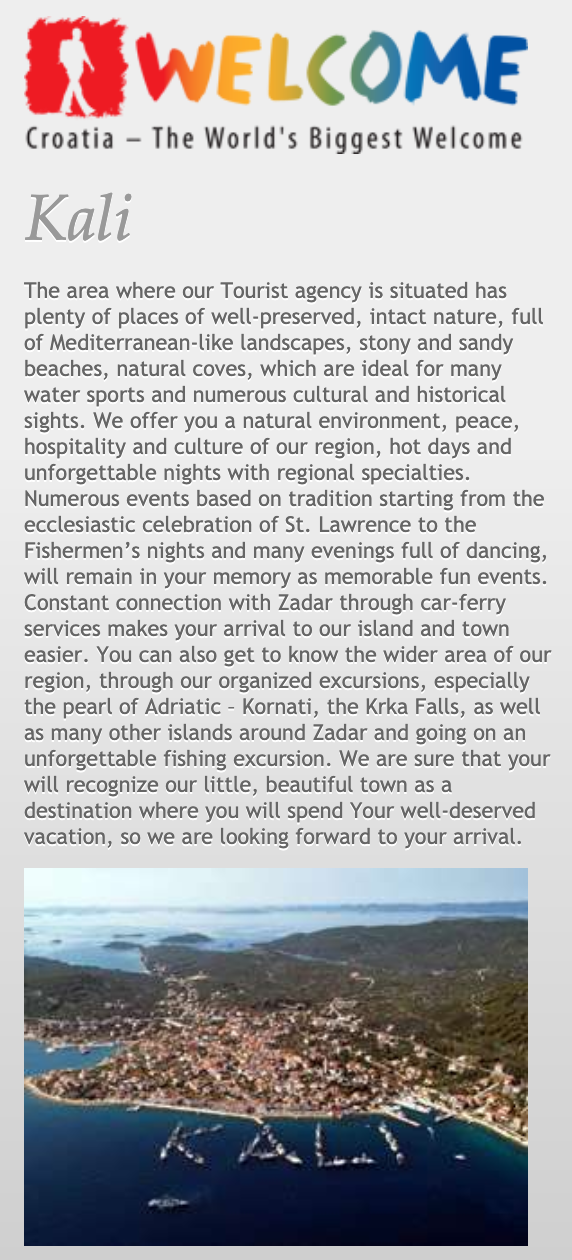
Kali.
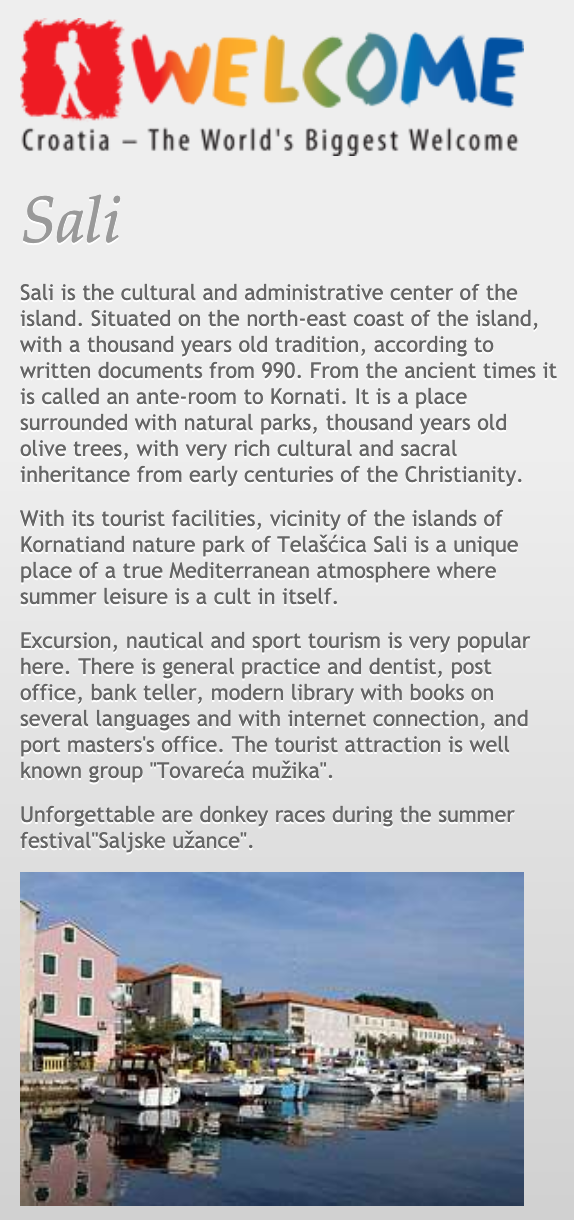
Sali.
You can see the entire project on the Welcome website, as well as much more of Luka Tambaca's stunning photography on the Welcome Facebook page.
Tune in tomorrow for Day 30, as Lacko moves from Sali to Kurba Vela on foot and kayak.
To follow the whole project from the start, follow the dedicated TCN page.
World's Biggest Welcome in Croatia: Day 20 - Veli Rat to Sali (Bike)
April 15, 2019 - Putting Croatian adventure tourism on the map, with the biggest welcome in the world. Day 20 of this incredible 2011 adrenaline trip covering 2,500 km along the Croatian coast.
The World's Biggest Welcome, an ambitious adventure tourism project in 2011 in Croatia enters Day 20 of this 2019 appreciation of one of the finest tourism promotion projects ever in Croatia.
The plan? To showcase the diversity and fabulous offer of adventure tourism in Croatia by following a GPS route the length of the Croatian coast in the shape of the word 'Welcome' - thereby creating the biggest welcome in the world from a hospitable tourism country.
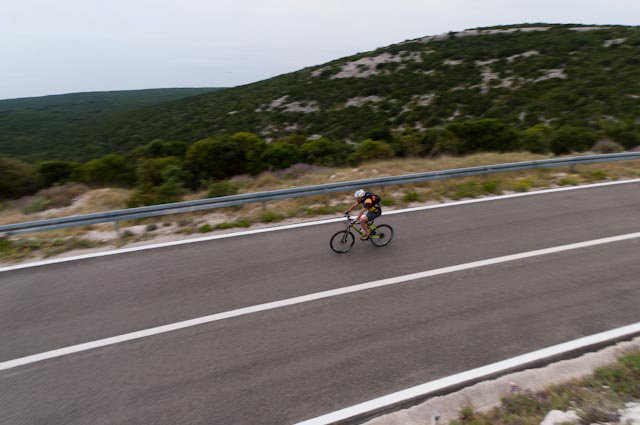
Day 20 moved from Veli Rat to Sali by bike.
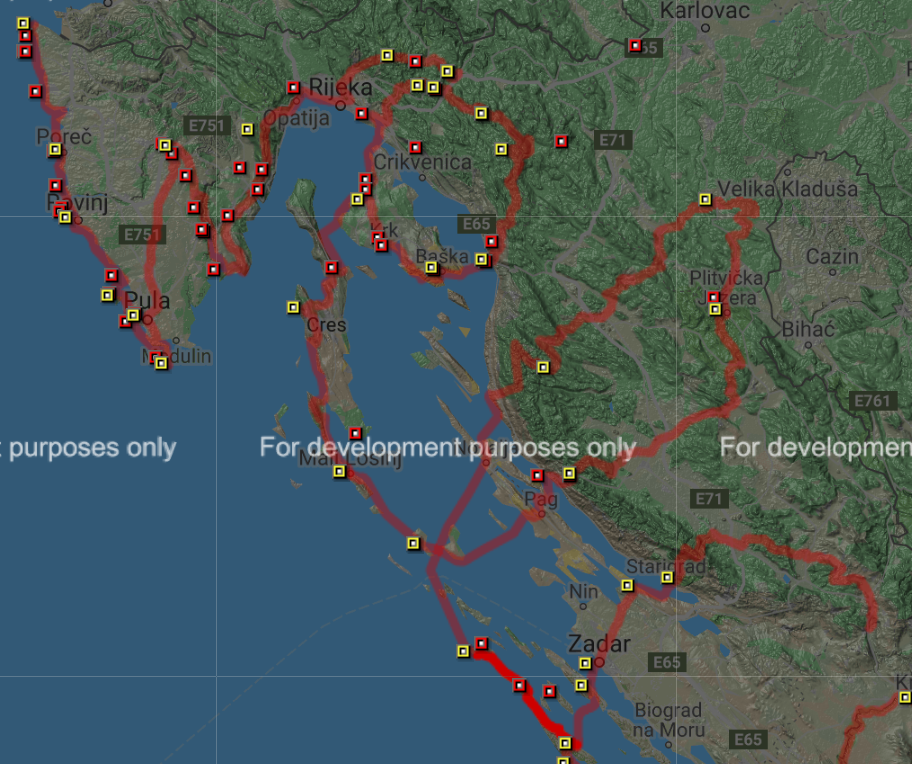
45 kilometres for the day: And really, just a 45 km bike ride from Veli Rat to Sali to complete forming the end of the 'L' in 'Welcome'.

Day 20 started from Božava, the town across from Veli Rat on the island of Dugi Otok.

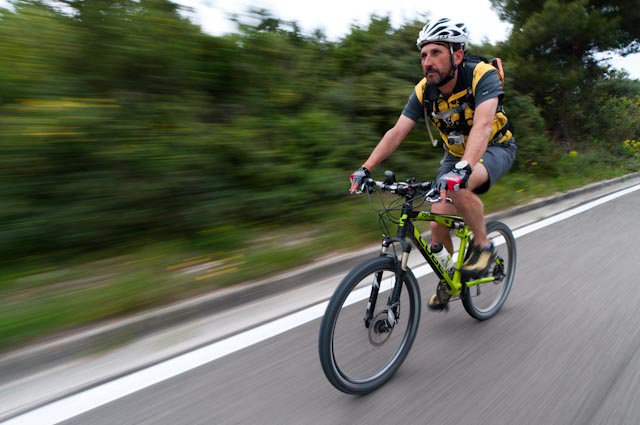
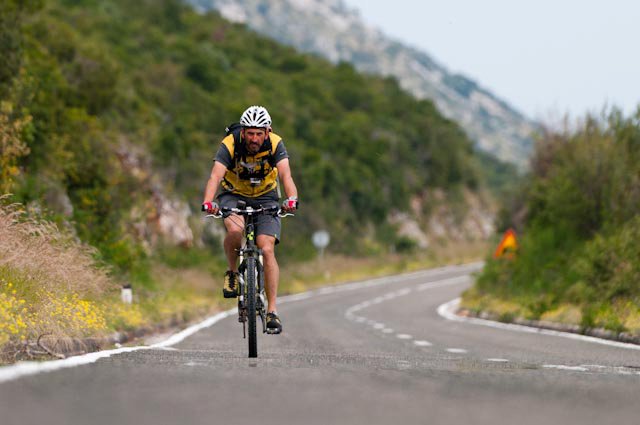
Lacko making his way from Veli Rat to Sali, a tourist town with a thousand-year fishing history.
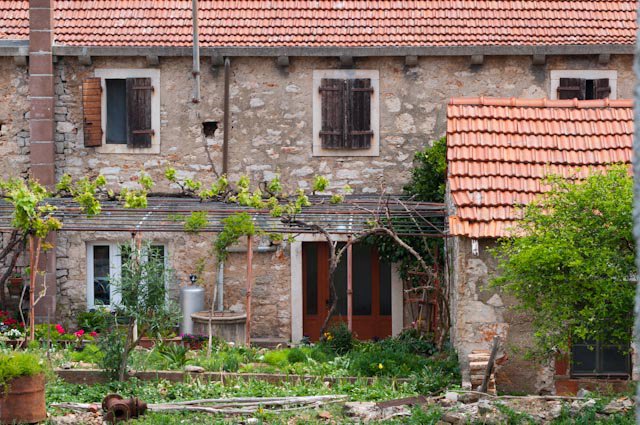
Žman, a small village on Dugi Otok.
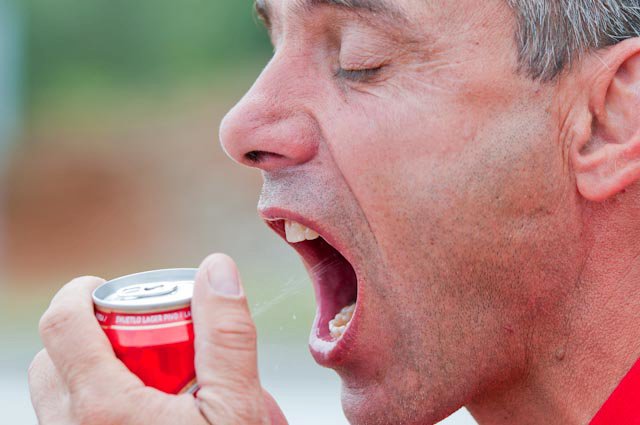
A stop for refreshments.
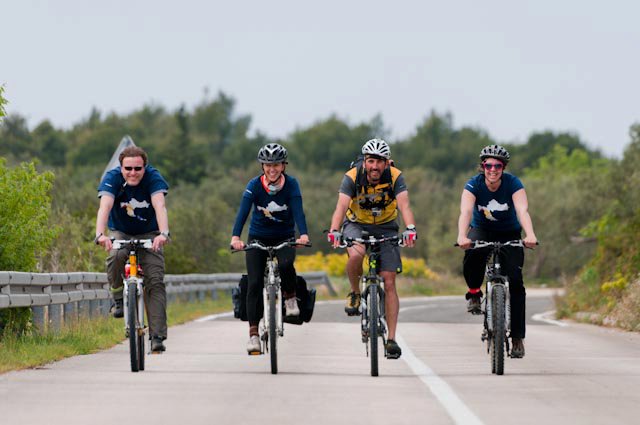
The crew.

A welcome song upon arrival in Sali.
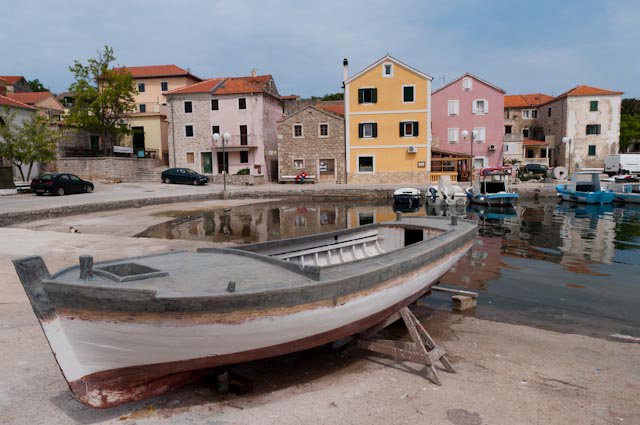

And finally, the pastel-colored Sali.
A key part of the project was promoting tourism, and the official website has details of the key places visited during the day.
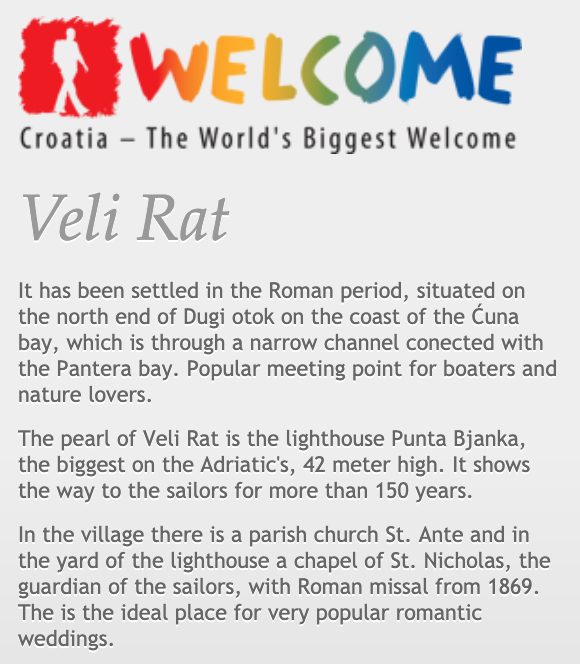
Veli Rat.
You can see the entire project on the Welcome website, as well as much more of Luka Tambaca's stunning photography on the Welcome Facebook page.
Lacko and his crew will take a break on Day 21 and 22, and continue on Day 23 by bike from Zrmanja Vrelo to Lovinac.
To follow the whole project from the start, follow the dedicated TCN page.
Pregnant In Croatia? Move to Sali and Earn 60,000 Kuna!
June 1, 2018 — There are several ways to solve Croatia's demographic crisis. Some municipalities are banking on paying for procreation.


